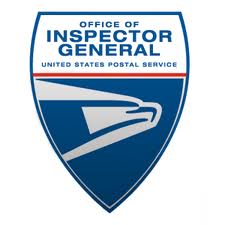BACKGROUND:
 A warranty is an agreement offered by the seller or manufacturer to replace or repair a faulty item, or to reimburse the purchaser in the event of a product failure. Warranty management is essential to the U.S. Postal Service because it owns and manages over 200,000 commercial products that have a manufacturer’s warranty. These commercial products include items such as copiers, computers, and Automated Postal Centers; and communication devices such as cell phones and hand held scanners.Another large category of warranties managed by the Postal Service is building roof warranties. The Postal Service owns 8,622 buildings. The roofs of these buildings have manufacturer’s warranties covering about 200 million square feet with a replacement value of about $3 billion.
A warranty is an agreement offered by the seller or manufacturer to replace or repair a faulty item, or to reimburse the purchaser in the event of a product failure. Warranty management is essential to the U.S. Postal Service because it owns and manages over 200,000 commercial products that have a manufacturer’s warranty. These commercial products include items such as copiers, computers, and Automated Postal Centers; and communication devices such as cell phones and hand held scanners.Another large category of warranties managed by the Postal Service is building roof warranties. The Postal Service owns 8,622 buildings. The roofs of these buildings have manufacturer’s warranties covering about 200 million square feet with a replacement value of about $3 billion.
The Postal Service’s Maintenance Operations was previously responsible for the preventative maintenance of all Postal Service-owned roofs. However, roof replacement was occurring every 10 to 15 years before the projected life expectancy and manufacturers denied warranty coverage because the required preventative maintenance was not being performed. Therefore, in August 2011, the Postal Service outsourced all roof maintenance and warranty Our objective was to determine whether the warranty claims process ensures that the Postal Service obtains a refund or replacement for purchases covered by a manufacturer’s warranty.management to a national contractor.
WHAT THE OIG FOUND:
The Postal Service effectively managed the warranty claims process for commercial products and obtained a refund or replacement for items covered by a warranty. However, the Postal Service did not recognize $2.7 million in expected annual labor savings from outsourcing the roof preventative maintenance program to a national contractor. Therefore, the Postal Service is paying for workhours that should have been saved because of outsourcing the roof preventative maintenance from Maintenance Operations to a national contractor.
WHAT THE OIG RECOMMENDED:
We recommended management reduce future employee workhours for the outsourcing of the roof preventative maintenance program using the Postal Service’s Workhour Estimator Program criteria. In addition, we recommended management update their policy to quantify what constitutes major or significant labor savings.
The Postal Service has a real estate portfolio of 8,622 owned buildings, with about 200 million square feet of roofs with a replacement cost of about $3 billion. These roofs have manufacturer’s warranties. As a condition of the roof warranties, the Postal Service is responsible for periodic inspections, clearing trash and debris off the roofs, and providing written reports on their condition. For all but 400 of the 8,622 building roofs, Maintenance Operations previously relied on local postmasters to perform these duties by requesting assistance from the Field Maintenance Offices. For the remaining 400 buildings, Maintenance Operations previously performed these duties because these large buildings were Maintenance Capable Offices (MCOs).1 We estimate that the annual preventative maintenance labor cost for roofs on the 400 MCO buildings was $2.7 million.
The Postal Service determined in 2010 that the existing roof preventative maintenance program for all 8,622 owned buildings was not effective for performing the required roof and warranty maintenance requirements. Roof replacement was occurring every 10 to 15 years before the projected life expectancy and manufacturers denied warranty coverage because the required preventative maintenance was not being performed. Therefore, in 2011 the Postal Service outsourced the roof maintenance program to a national contractor with an initial 2-year contract cost of about $21 million
Labor Savings Not Recognized
The Postal Service did not recognize $2.7 million in expected labor savings from outsourcing the roof preventative maintenance program to a national contractor at the 400 MCO buildings. This occurred because the Postal Service committee who prepared the cost savings analysis3 did not communicate the expected workhour reductions to Maintenance Operations since Postal Service procedures4 did not require such notification. Maintenance Operations was also unaware of the expected workhour reductions because they were not part of the committee that performed the savings analysis. Additionally, even if management had implemented the workhour reductions, the amount of the expected reductions would not have been correct because the committee did not correctly calculate them, as discussed below. Consequently, the Postal Service did not realize $2.7 million in annual labor savings or the equivalent of 28 full-time maintenance employees.5